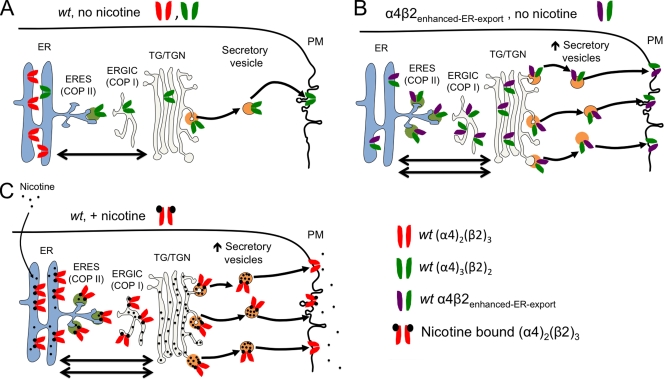Figure 8.
A more detailed view of subcellular components in nAChR up-regulation, complementing the schematic view of Fig. 7. ER, COPII vesicles, Golgi apparatus, secretory vesicles, PM, and nicotine are shown. Four types of α4β2 nAChRs are defined in the box. (A) wt nAChRs assemble in the ER and exit via COPII-containing ERES. Vesicles bud from the TG/TGN and transport receptors to the PM. (B) α4β2enhanced-ER-export nAChRs show increased ER exit and therefore eventually reach the PM in greater numbers. (C) Nicotine is now present at extracellular concentrations produced by smoking (0.1–1 µM). Nicotine enters the ER and stabilizes nAChRs with (α4)2(β2)3 stoichiometry (see Fig. 7; step 8). Newly assembled nicotine-bound nAChRs show increased ER exit; therefore, greater numbers of nAChRs undergo anterograde trafficking and insertion into the PM. Nicotine concentrations are elevated within ERGIC, TG/TGN, and secretory vesicles via acid trapping (Lester et al., 2009). At the PM, smoking-relevant nicotine concentrations only partially occupy nAChRs, revealing enhanced function of up-regulated α4β2 nAChRs.

